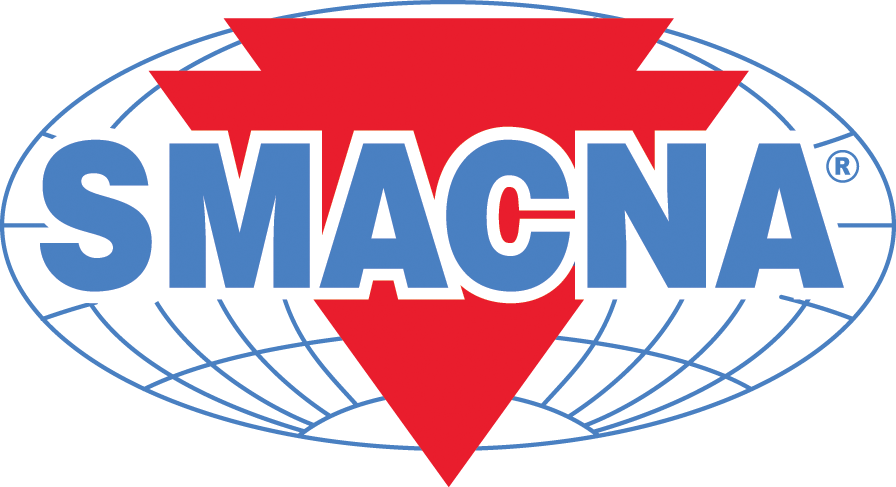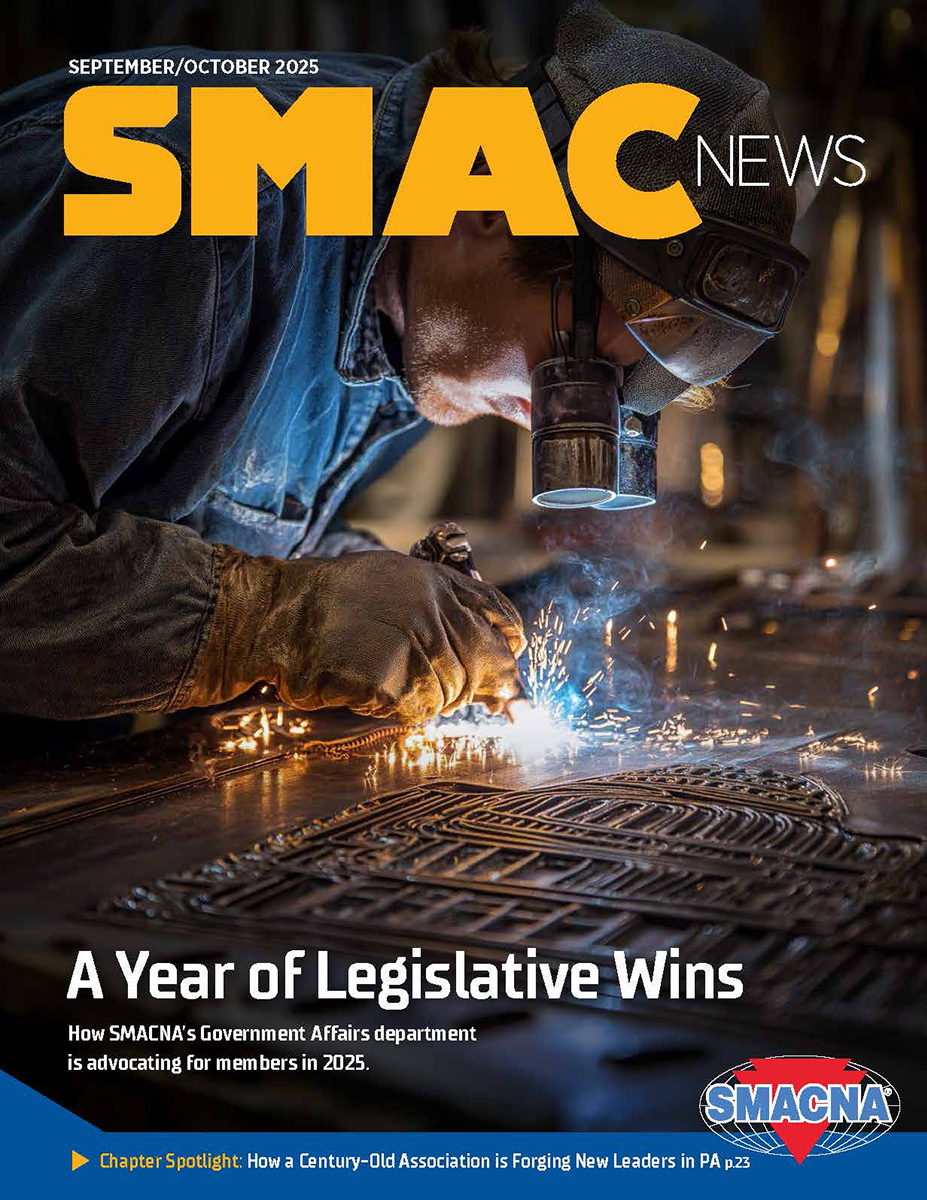The Majority of SMACNA Members Need a CTO
It’s no secret that our industry has seen a rapid digital transformation over the past two decades. From BIM and ERP systems to robotic layout and cloud project management, today’s contractors and fabricators have access to powerful tools.
 Yet many companies still lack something critical: an executive dedicated to technology strategy.
Yet many companies still lack something critical: an executive dedicated to technology strategy.
In most industries, that role is the Chief Technology Officer (CTO). The CTO ensures technology decisions align with business goals, but in construction the path to that seat looks different.
In my experience, most construction technologists don’t come from big named MBA programs. They tend to start in VDC, BIM, estimating or project management, hands-on roles where they quietly shape the tech stack, usually attacking one problem at a time. They troubleshoot software, smooth workflows and help jobs run safer and more efficiently. Over time, someone notices: “You’re basically the CTO already.”
These emerging leaders have succeeded not because of a business degree, but because they deeply understand industry workflows and where technology creates impact. Finance, budgeting and forecasting can be learned. What can’t be taught is the passion for building smarter. As one colleague put it, it’s easier to teach finance to a field-driven technologist than to teach construction to a business generalist.
This role needs to evolve, and it is crucial that it grows beyond this stage. The informal “accidental technologist” model eventually breaks down. A BIM manager or project coordinator juggling tech decisions alongside other duties can’t drive long-term strategy. Adoption falters, implementations stall and opportunities are lost.
Technology today is operational, not support. Choosing software and structuring data flows directly influences performance and profitability. Systems are interconnected: an ERP decision affects field operations; a fabrication tool influences estimating. Only a leader with a cross-functional view can make sustainable choices.
As younger professionals enter the industry, they expect modern tools and efficient systems. Appointing a CTO signals that your company values innovation and is investing for the future. Not only is this important for operational success, but it also differentiates your company and becomes a strategic move.
For technologists in the room aspiring to the role, the path starts with visibility. You must build your case. Map your digital workforce like an org chart: systems, contracts, training, support and innovation. Identify gaps and inefficiencies. Document wins, show ROI (even if I contend that they can be vague) and demonstrate how your work drives company-wide value. Don’t assume executives see it; prove it.
Succession planning is another marker of readiness. If you’re wearing 12 hats, identify who will take
over your day-to-day when you step into leadership. Build your case like a project: scope, budget, timeline and backfill. Then present the vision: “Here’s what we could accomplish if I had the authority to lead these changes.”
A common pushback is, “You’re already acting like the CTO; why change anything?” The answer is simple: authority matters. It needs to be made official. Without the title, you lack the power to make decisions, establish policies or hold others accountable across departments. The company expects leadership without granting the mandate or support structure.
When formalized, the CTO role unites departments, accelerates decisions and maximizes the value of digital investments. It’s not about a title; it’s about building a future-ready business.
It’s important to remember that the best CTOs aren’t isolated in corner offices. They’re out with teams, listening, adjusting and ensuring the tech program works. Done right, the role becomes the athletic director of your digital ecosystem; coordinating coaches, players and equipment to keep everyone moving in the same direction.
Travis Voss is the Director of Innovative Technology and Fabrication at SMACNA. He leverages his background in the tech field to explore, adapt and potentially develop technologies and workflows for the construction industry, particularly as it undergoes its digital transformation.
Published: October 21, 2025
IN THIS ISSUE
A Year of Legislative Wins
How SMACNA’s Government Affairs department is advocating for members in 2025.
Big Build, Bigger Challenge
Welsch Heating and Cooling delivers energy efficiency and architectural style on one of St. Louis’s largest residential projects.
Chapter Spotlight: PHILADELPHIA - How a Century-Old Association is Forging New Leaders
SMCA is cultivating young leadership, strengthening labor ties and expanding educational programs to keep Philadelphia’s sheet metal industry strong, sustainable and future-ready.
Construction Tax Planning Under the One Big Beautiful Bill
The One Big Beautiful Bill Act (OBBBA), a sweeping 2025 tax reform package, introduces wide-ranging changes to federal tax policy. While it may appear broadly applicable across industries, its impact on construction is direct and substantial.
Driving Fabrication Innovation
Dynamic Systems thrives by delivering mechanical construction precision through advanced technologies and streamlined digital workflows.
Fifth Circuit Finds NLRB Structure Likely Unconstitutional
On Aug. 19, the U.S. Court of Appeals for the Fifth Circuit halted unfair labor practice proceedings against three employers, most notably SpaceX, before the National Labor Relations Board (NLRB).
How Do Contractors Turn Policy Into Progress?
Contractors and SMACNA staff know advocacy matters. When members get involved, our voices are heard and we shape policies that protect and grow our industry.
How Getting Involved Can Make a Big Difference
SMACNA's President discusses the importance of engaging with lawmakers and reflects on his term.
Latest SMACNA Publications
Explore SMACNA’s latest publications with insights on BIM and IP, practical resources to help contractors improve projects, protect their businesses, and stay ahead.
More Than Just Another Office Project
SMACNA member Dee Cramer was hired to perform HVAC construction on a corporate campus built to harmonize with the environment.
Shining Symbol of Strength
Copper walls by General Sheet Metal define IBEW 48’s hall.
SMACNA’s Legacy of Government Relations
SMACNA's CEO discusses the significant role government relations have always played at SMACNA and details his own interaction with our team on the Hill.
The Majority of SMACNA Members Need a CTO
It’s no secret that our industry has seen a rapid digital transformation over the past two decades. From BIM and ERP systems to robotic layout and cloud project management, today’s contractors and fabricators have access to powerful tools.
Welcome New SMACNA Members


